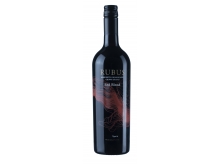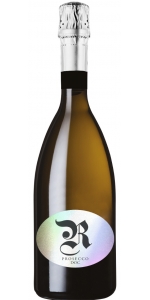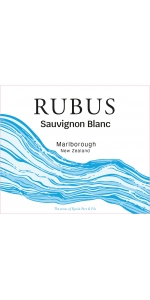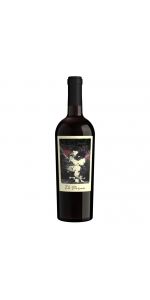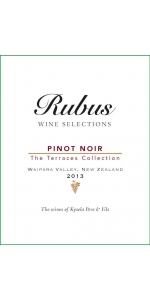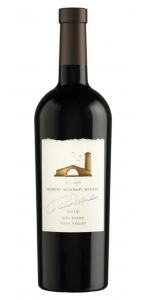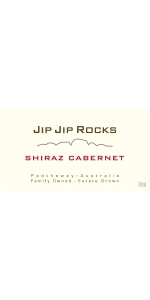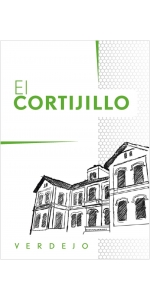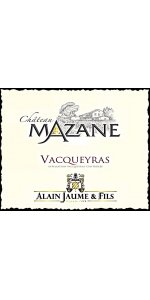Rubus Red Blend Organic 2023
| Country: | Spain |
| Region: | Tierra de Leon |
| Winery: | Rubus |
| Grape Type: | Tempranillo |
| Vintage: | 2023 |
| Bottle Size: | 750 ml |
Rubus Prosecco Organic is made from 100% Glera.
The Rubus Project was created by Fran Kysela as a way to source & sell incredible wines at value prices. All wines in this international project are hand-selected by Fran Kysela. Rubus wines are fruit driven, true-to-type values that over deliver - a true representation of quality for the consumer at an excellent price.
Clean, light, fresh & airy. 100% Glera, Certified Organic + vegan friendly.
Rubus Sauvignon Blanc Marlborough is made from 100 percent Sauvignon Blanc.
The Rubus Project was created by Fran Kysela as a way to source & sell incredible wines at value prices. All wines in this international project are hand-selected by Fran Kysela. Rubus wines are fruit driven, true-to-type values that over deliver - a true representation of quality for the consumer at an excellent price.
Aromas of gooseberry, lemongrass, boxwood, fresh celery and bready notes on the nose. The palate is dry to taste with juicy gooseberry and citrus flavors forming a light, refreshing medium bodied wine with a tart yet soft lingering finish.
Grapes are gently pressed, settled and racked to fermentation. Juice is cool fermented in stainless steel tanks for 21 days and left on the lees for 2 months prior to blending, light fining, filtering and bottling.
The perfect accompaniment to vegetable or light seafood dishes or to enjoy before a meal.
The Prisoner Wine Company The Prisoner Red Blend is made from a blend of Zinfandel, Cabernet Sauvignon, Petite Sirah, Syrah, and Charbono.
Bright aromas of ripe raspberry, vanilla, and coconut give way to flavors of fresh and dried blackberry, pomegranate, and vanilla, which linger harmoniously for a smooth and luscious finish.The Prisoner Red Blend was inspired by the wines first made by the Italian immigrants who originally settled in Napa Valley. The Prisoner is now the most recognized red blend, leading the resurgence of interesting blends by incorporating Zinfandel with the unlikely mix of Cabernet Sauvignon, Petite Sirah, Syrah, and Charbono.
On the nose, dried blackberry, dried açai berries, and hints of cedar and tobacco leaf are accented by sweet spices of clove, cinnamon, and nutmeg. Flavors of ripe dark cherry, blackberry coulis, and hints of anise linger harmoniously for a soft, vibrant finish balanced by ripe tannins.
Chef Brett recommends pairing The Prisoner Red Blend with Kalbi Short Ribs or Chicken Mole Tostada.
Vineyards: When you outgrow winemaking tradition, you must forge your own path. And we did. The Prisoner exists because of the collaboration with our growers, many of which have been with us since the very beginning—from the Solari Family Vineyard in Calistoga, where old school sensibilities meet new techniques, to the Korte Ranch in St. Helena, a vineyard whose diligence outlasted the Prohibition and has sustained four generations.
The Prisoner Wine Company The Prisoner Red Blend is made from a blend of Zinfandel, Cabernet Sauvignon, Petite Sirah, Syrah, and Charbono.
Bright aromas of ripe raspberry, vanilla, and coconut give way to flavors of fresh and dried blackberry, pomegranate, and vanilla, which linger harmoniously for a smooth and luscious finish.The Prisoner Red Blend was inspired by the wines first made by the Italian immigrants who originally settled in Napa Valley. The Prisoner is now the most recognized red blend, leading the resurgence of interesting blends by incorporating Zinfandel with the unlikely mix of Cabernet Sauvignon, Petite Sirah, Syrah, and Charbono.
On the nose, dried blackberry, dried açai berries, and hints of cedar and tobacco leaf are accented by sweet spices of clove, cinnamon, and nutmeg. Flavors of ripe dark cherry, blackberry coulis, and hints of anise linger harmoniously for a soft, vibrant finish balanced by ripe tannins.
Chef Brett recommends pairing The Prisoner Red Blend with Kalbi Short Ribs or Chicken Mole Tostada.
Vineyards: When you outgrow winemaking tradition, you must forge your own path. And we did. The Prisoner exists because of the collaboration with our growers, many of which have been with us since the very beginning—from the Solari Family Vineyard in Calistoga, where old school sensibilities meet new techniques, to the Korte Ranch in St. Helena, a vineyard whose diligence outlasted the Prohibition and has sustained four generations.
The Rubus Project was created by Fran Kysela as a way to source & sell incredible wines at value prices. All wines in this international project are hand-selected by Fran Kysela. Rubus wines are fruit driven, true-to-type values that over deliver - a true representation of quality for the consumer at an excellent price.
Grapes are sourced from the Lessini hills in the Colli Berici, where the cold nights allow the aromatic compounds in the grapes to develop. The vines, 20 years old on average, are planted on calcareous soils of volcanic origin.
Nice garnet and red color. Expressive and charming on the nose with cherry and blackberry aromas. On the palate, the wine has a nice spicy note. The length to the finish is round and long.
Rubus Pinot Noir is made from 100 percent Pinot Noir from Veneto Italy
Tasting notes: Nice garnet and red color. Expressive and charming on the nose with cherry and blackberry aromas. On the palate, the wine has a nice spicy note. The length to the finish is round and long.
Vineyards:
The grapes are grown primarily on the hills south of Vicenza, the Colli Berici, where the hillside sites ensure lower yields and better ripeness of the grapes.
The vineyards are located in the hills and are south-west facing. The hillside sites experience cooler nights, allowing the aromatic compounds in the grapes to develop. The vines are trained using the Guyot system, planted on calcareous soils of volcanic origin.
Average age of the vines is around 20 years old.
Vinification:
The grapes were harvested, destemmed, crushed and then cool soaked for 24 hours. Maceration on the skins took place before fermentation at temperatures of up to 22°C. Following malolactic fermentation, 30% of the wine was aged in oak for four to five months prior to bottling.
Winemaker: Alberto Marchisio
Acidity: 5.3 g/Liter
RS: 5.6 g/Liter
pH: 3.42
Nice with roasted or grilled beef, game and a very good companion for matured cheese.
Robert Mondavi Winery Napa Red Blend is made from 74% Cabernet Sauvignon, 13% Cabernet Franc, 9% Merlot, 4% Petit Verdot.
Robert Mondavi’s vision was to elevate Napa to the world stage. In celebration of his achievement, our Napa Tier wines are sourced from distinctive vineyards throughout the Napa Valley and truly emulate a classic Napa Valley style.
Nearly half of this year’s blend is sourced from the deep, well-drained soils of Oakville, which provides gorgeously dark, supple wines with fine tannins. Stags Leap District, Oak Knoll, Yountville, and Rutherford also find their place in the bottle, with the varying mesoclimates and soils of these vineyards integrating seamlessly into a 100% Napa Valley blend.
Review:
"Dominated by 80% Cabernet Sauvignon with smaller percentages of the other Bordeaux red grapes, this wine speaks of heritage and prestige. Broad, silky, and powerful, the graceful liquid is enhanced by dark chocolate, white pepper, black plum, violets, and sweet earth."
-Meridith May, Tasting Panel, January/February 2023 Pts. Tasting Panel
Rubus Spanish Red Blend Organic is made from 70% Tempranillo and 30% Syrah.
The Rubus Project was created by Fran Kysela as a way to source & sell incredible wines at value prices. All wines in this international project are hand-selected by Fran Kysela. Rubus wines are fruit driven, true-to-type values that over deliver - a true representation of quality for the consumer at an excellent price.
This Organic Red Blend from Tierra de Castilla is 70% Tempranillo and 30% Syrah. It’s made in a Rhone style, with whole berry fermentation proceeded by skin contact. You’ll find a dark purple color, rich cherry fruit, freshness and a surprisingly long finish that’s almost too good to be true for a value wine.
Enjoy this with tapas, burgers, pizza or grilled vegetables.
The Rubus Concept
Rubus wines are a private label created and used by Kysela Pere et Fils, LTD in order to buy, bottle and market wine found at incredible quality/price ratio. All Rubus wines are selected by Fran Kysela MS.
It was first used for a superb batch of 1,200 cases of Amador county Zinfandel back in 1997. The wine sold in a few days and the Rubus brand was not used since then.
During a trip in California in 2009, when Fran Kysela tasted some incredible wines (available in bottle but without label), he decided to help resurrect the brand creating an outstanding Cabernet Sauvignon from Stag's Leaps district in Napa Valley (California) , followed by an excellent Chardonnay from Russian River Valley (California)
We then developed the Rubus Zinfandel from Lodi (California).
In 2011, we added a Shiraz/Viognier blend from the Barossa in Australia.
For 2012, the newest addition to the Rubus line is a Chardonnay from Colchagua Valley in Chile.
Rubus is now its own brand representing quality for the consumer and an incredible price along the way.
Rubus Meaning
The name RUBUS means "raspberry" in Latin and it is the name given to the genus of flowering plants in the rose family. For instance, here are some famous fruit from the Rubus family with their latin names:
Rubus fruticosus agg. – Blackberry
Rubus idaeus – European Red Raspberry
Rubus occidentalis – Black Raspberry
Rubus pensilvanicus – Pennsylvania Blackberry
Rubus strigosus – American Red Raspberry
Jip Jip Rocks Shiraz-Cabernet is made from 55% Shiraz, 45% Cabernet Sauvignon
The Jip Jip vineyard is planted in some of the world’s oldest mineral rich soils and in the most temperate of maritime climates. It consistently produces excellent fruit quality from low yielding vines. Great attention to detail with the integration of fruit flavors and fine oak barrels helps produce classic handcrafted wine styles.
Deep purple. Boysenberry and mulberry aromas with a hint of cedar and pepper. Similar berry fruits show through on the opulent, textured palate, with a lingering finish.
El Cortijillo Blanco La Mancha is made from 100% Verdejo
El Cortijillo Verdejo shows a pale straw green color. It is fresh and aromatic with floral notes, peach, crisp apple and tropical fruits. A mineral accent and herbal notes. Good acidity, it is refreshing on the palate, fruity and smooth.
Rubus Brut Blanc de Blanc NV is made from 1/3 Ugni Blanc, 1/3 Airen, 1/3 Muscat .
The Rubus Project was created by Fran Kysela as a way to source & sell incredible wines at value prices. All wines in this international project are hand-selected by Fran Kysela. Rubus wines are fruit driven, true-to-type values that over deliver - a true representation of quality for the consumer at an excellent price.
Elegant pale yellow color with fine bubbles. Floral and fruity on the nose, with aromas of fresh butter and cake. On the palate, the wine is crisp and harmonious - a delightful sparkling wine.
Machine harvest. The base wine is fermented at a low temperature. The second fermentation takes place at 14°C for 2 weeks, followed by dosing.
Chateau Mazane Vacqueyras Rouge is made from 60% Grenache, 25% Syrah, 15% Mourvedre.
30% aged in oak, 70% in concrete vats
This 50 year old single vineyard (22 Acres) consists of three main varieties with a predominance of Grenache. It stretches over the 'Garrigues' (scrubland) plateau that is ideally located between the Ouvèze (tributary of the Rhone river) terraces and the Dentelles de Montmirail.
Chateau Mazane Vacqueyras Rouge is medium-bodied, pure and elegant. It offers plenty of plum, blueberry, spring flowers and peppery notes. On the palate, the richness of the tannins harmonizes with the smoothiness of the wine. The finish is long, with spice aromas and licorice. Beautifully textured, enjoy it over the coming 6-7 years.
on.
- back
Zuccardi Finca Piedra Infinita Altamira is made from 100 percent Malbec.
Deep red in color, the Zuccardi Finca Piedra Infinita Altamira expresses great fruity character with notes of red fruit. Grand structure and acidity on the palate with mineral with notes of wet stone and graphite and a long finish.
Review:
Quiet complexity that needs time in the glass. While it is brooding and deep, there is also a perfumed, floral and herbal aspect that makes it so attractive and unforgettable, even at such an embryonic stage. Freshly crushed blueberries, dried licorice, decadent violets, crushed stones and ash on the nose. Satin-textured tannins on the palate, which are tense, chalky and seamless. Powerful and juicy with impeccable balance. A great, cerebral and intrinsic malbec from Argentina. You can drink now, if you want, but it is a wine that you’d want to keep for the next two decades. A real charmer, especially for the wine nerds. Buy this and try!
-James Suckling 99 Points
Dark plum in color with abundant aromas of dark chocolate, black cherry, and sun-ripened blackberry with a hint of cedar. Layered flavors of blackberry and raspberry pie filling, accompanied by notes of cinnamon, chocolate, and nutmeg play on the palate. Smooth and focused with refined tannins and a medium finish.

